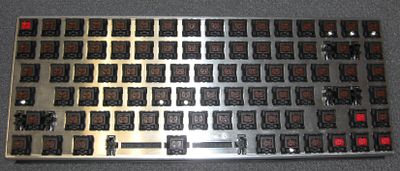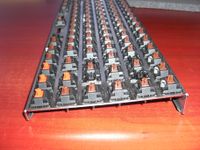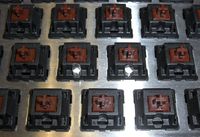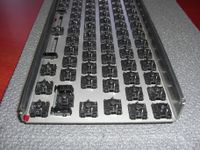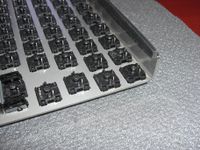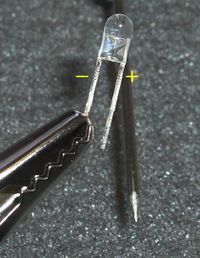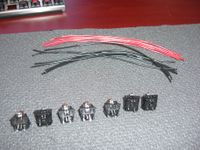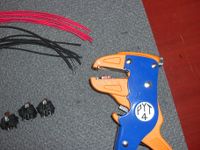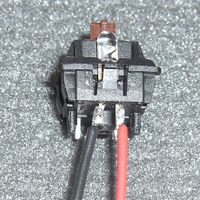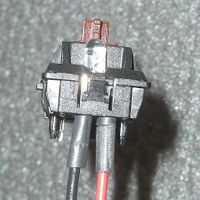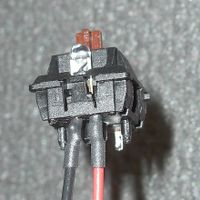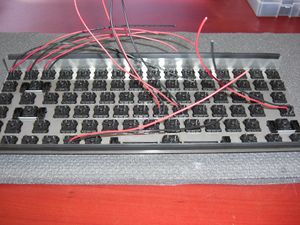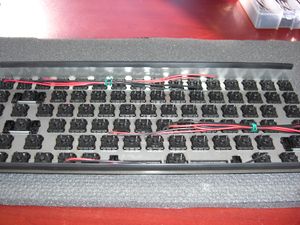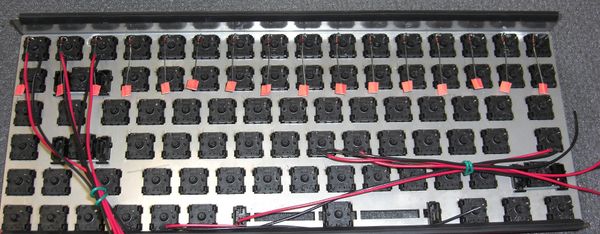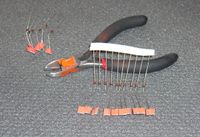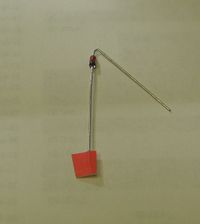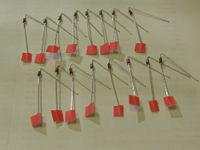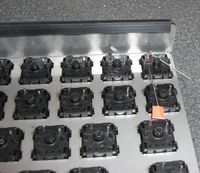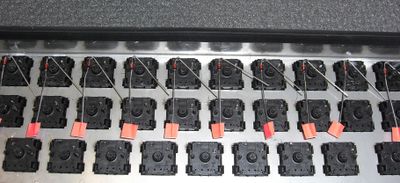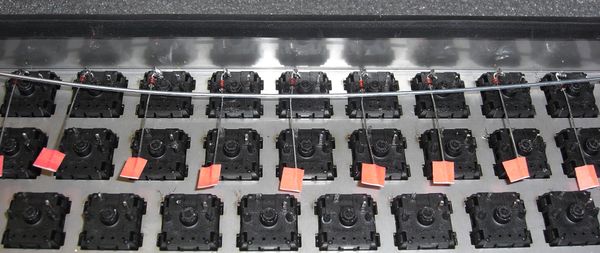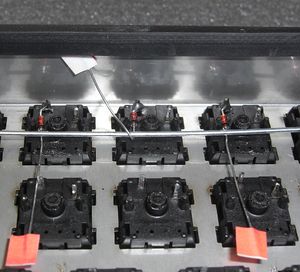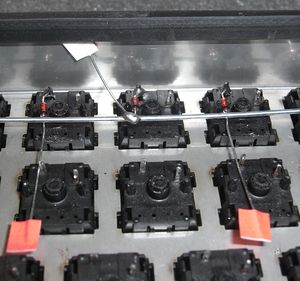Hard-Wiring How-To
Contents
How To Hard-Wire a Keyboard
This How-To is a guide to hard-wiring a keyboard without using a PCB. It is designed to enable someone handy with a soldering iron to make a new keyboard layout using only a plate, switches, wire and some electronic components.
Tools Used
- Weller soldering iron with pencil tip
- Soldering helper
- Small wire cutter
- Small needle-nose pliers
- Self-adjusting wire stripper
Parts list
coming later
Main Steps
Populate Plate
- Install switches
- Install stabilizers
- Install LEDs
Wire LEDs
- Remove switches with LEDs
- Prep leads
- Solder leads to LEDs
- Heat-shrink connections
- Re-install switches
Wire Positive (diode) Rails on all Rows
- Make certain the stabilizers and switches work properly
- Prep one row of diodes
- Install one row of diodes
- Trim excess negative leads
- Check and/or improve solder joints
- Prep (cut and straighten) rail for soldering
- Solder center diode to rail
- Solder one diode near each end to hold rail in place
- Solder balance of diodes on rail
- Trim excess positive leads
- Repeat for additional rows
Wire Columns
Route/connect LED Cables
Connect Row Cables
Connect Column Cables
Connect Teensy
Program Teensy
Mount Teensy and Other Components
Build Log with Photos
This build log is for the GH75 custom keyboard by samwisekoi. It will require adaptation for TKL and 104-key (full-size) keyboards.

